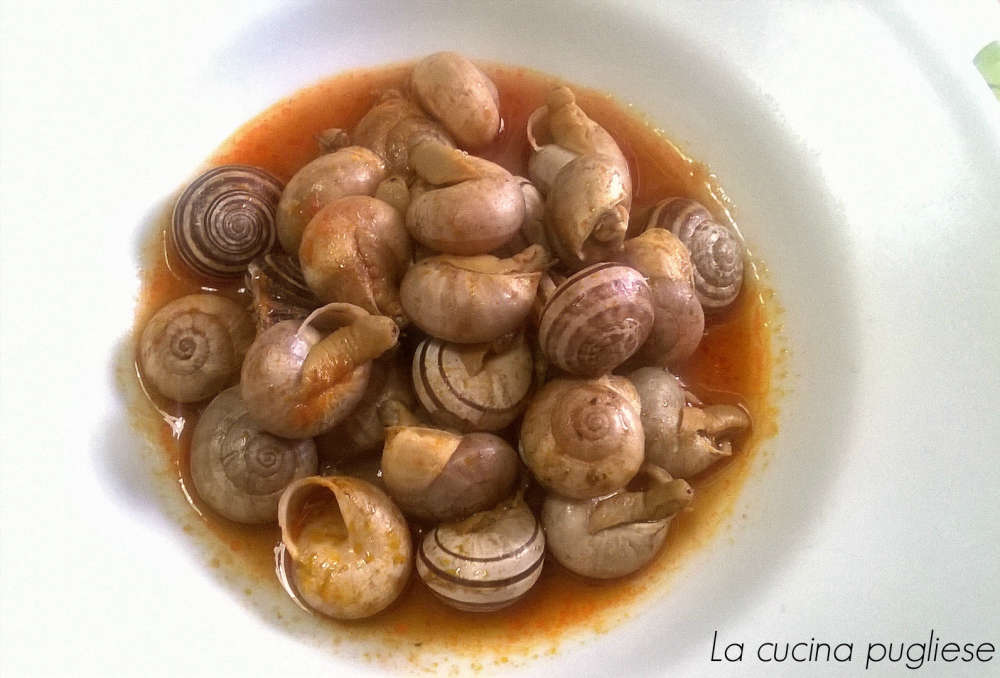Ingredients
• Snails
• The peels of one orange and one lemon
• Green chili peppers (to taste)
• Salt (to taste)
• 1 teaspoon black pepper seeds
• 1 teaspoon cardamom seeds
• 2–3 bay leaves
• 1 cinnamon stick
• 3 bunches of spinach
• Prepared baqdounsiyyeh
Method
1. Get some (in fact lots of) snails. You can either buy them from a trusted source (you won’t find them in supermarkets) or collect them from the mountains on the first sunny day after a heavy rainfall. The ones that are now in season are light brown and medium-sized (not huge, like the French escargots, or tiny, like those that grow on tree trunks). How many? That, of course, depends on the appetite of the eaters. We locals usually calculate >50/person. Yes, more than 50, not five! The French usually serve snails in sixes – we cook them in hundreds.
2. Needless to say, your snails should be alive! For the following days, you’ll have some hundred pets in your kitchen, being pampered and taken care of. Because snails crawl on muddy lands and stones, and don’t mind a bit of soil with their food, they have to be cleaned thoroughly – that is from the outside and from the inside. First give them a wash, a general one, just to remove the bulk of dirt. Then place them in a big container that can be fitted with a spotted lid (a sieve, for example) to allow them to breathe. Give them food: a few lettuce leaves, the skins of some cucumbers, and sprinkle them with flour. The aim here is to feed them long enough for them to get rid of all the soil in their system, otherwise, the cooked meat will taste as though it contains sand. Two days should be enough. Every day you should wash the snails with running water, place them back into their container, continue with the food and flour, and cover with the lid.
IMPORTANT: Put a heavy weight on the lid or your hundred pets will be crawling all over the place.
After you’re sure that they have processed at least two times the clean food you have given them, wash them thoroughly. This means rubbing each of the shells, making sure that all indents and curves are free of soil, mud, or remains. To make the process easier, rub every two or three against each other under running water. Place the cleaned snails in a big pot and cover with water. Any floating snails may mean dead snails. Check them by piercing each one. If the flesh moves, the snail is alive and may be kept. If not, throw it away.
3. Put the pot on low heat, making sure that you keep the snails from crawling up the sides of the pot. Eventually you’ll bring the pot to a boil, but that should be done gently. Snails enjoy the warmth very much, so they will peek out of their shells when the water gets warmer. So the longer the warming of the water takes, the more cooked shells will have their meat popping out. That means easier eating.
4. When the pot boils, foam will form. Keep skimming and discarding the foam until the water is clear. Add the condiments. Traditionally, we use the peels of one orange and one lemon, green chili peppers (to taste), salt, black pepper seeds, cardamom seeds, bay leaves, and a cinnamon stick.
5. After they boil, cook them for about an hour on gentle heat until the meat is ready. To check, pull the meat out of the shell using a toothpick, and eat. It should be tender, yet with a bite. Add more salt to the water if needed.
6. To serve, you have three options. The first is to eat them with no further preparations. This is very common among Palestinian snail-eaters. Serve them hot, drained, in a big bowl with enough toothpicks. One should either bite the meat directly or use a toothpick and then sip the liquid in the shell.
7. The second option is to serve them with cooked spinach. For this, you need to clean the spinach, chop it very coarsely, and cook it over gentle heat, using a bit of the water that the snails were cooked in. Add as many shells as needed and cook a bit more. Serve the stew with white rice as a side dish.
8. The third option is to serve unshelled snails with baqdounsiyyeh (a dip made with parsley and tahini). For this, take the meat out of a number of shells and mix it into the prepared baqdounsiyyeh. Eat as an appetizer, with bread and a squeeze of lemon.
Cooked snails are best kept in their broth, either in the refrigerator (for up to three days) or the freezer.


